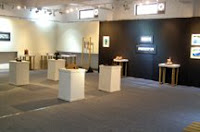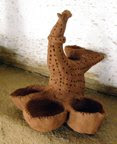

My little friend Moon
Sitting under the dark gray sky I wondered why everyone thought the night sky was black… I could see the black silhouettes of the houses and trees but the sky looked a nice dark bluish gray in color. It was there that I had first seen my friend, the moon. He lives up above in that night sky and I often spoke to him from my window. Every night he was there, ever since I remember and when he went away on a holiday once a month he left behind the stars to give me company, tinier but brighter, scattered all over… in fact I actually had trouble peeping out to get a good look at all of them together, they seemed to be dancing around all night, playing, twinkling and winking, trying very hard to entertain me. It’s fun to play with them but it’s always more fun to have the moon back so I could have a nice quiet conversation with him.
One night while we were talking, I asked him if I could go closer and meet him, “We’ve been friends since so long but we haven’t ever shook hands” I said in dismay and hope. The moon smiled and said, “Yes why not, but first you must sleep since you have had a long day at school, I’m right here and if you sleep, we can spend time together”. I very excitedly pulled my cover and closed my eyes with a smile. I realized slowly that the little moon has become very large and was looking at me from the window, “Oh! I thought you were as small as me but you are so big!!” Hahaha he laughed and said “I look small because I live so far away in the sky”. Amazed with the actual size of my friend I asked him anxiously, “Can you take me with you to visit your home?” With a warm smile the moon gave me his hand and stepping out of my bed I flew with him to see his home.
We flew and we flew, with the wind blowing my hair and my arms spread wide, I felt as light as a bird, I flew with my friend inhaling the night air! Up and down, left and right, I passed all the stars that twinkled while saying hello to me… It was like being welcomed by everyone around with a bright smile in the dark sky… “Here we are” moon said, after a while… I looked around surprised!!! There were only stars of
different sizes, some clouds floating around but no walls… no doors... no windows!!! “Where is your house?” I asked perplexed. “I live right here in the open sky” he said, “here we don’t have walls and since there are no walls we don’t need windows or doors either. Like every night you have to open the window to see me, I just have to look your side to see you… that way I can always be there for all my friends on Earth”. And then for the first time I looked down. There were so many houses, with roofs of different shapes and sizes and heights, little lights shining out of their windows… I wondered how come I didn’t notice so many houses from my home??? Looking at the numerous windows I smiled and thought it was not just me who looked out and made friends with the moon but everyone on the earth was there looking and talking to him at the same time and my dear friend made all of us feel so special giving us all his attention… I hugged him hard and he giggled and tried to wriggle out. “Why are you giggling?” I asked him and rolling off with the giggle he replied, “I’m not used to being hugged so it tickles when you do it” “hehehehe”, I giggled too and tried hugging him again…and we flew behind each other around the stars all night, playing hide and seek amongst the clouds… they helped me hide and always made sure that some part of the moon was visible so I could catch him quickly… zigzag I went, up and down, from around the clouds to the dancing stars and we all played and laughed and danced all night… Soon I was tired and sat on my friends back while he took me around to different levels of his home, showing me all the angles from which he saw us…
The sky’s color was getting lighter and we started crossing little flocks of birds… they seemed a little surprised to see me in the beginning but soon smiled and said their good mornings… we realized the Sun was waking up… and I remembered that I have to go to school as well!!! Moon held my hand and we both came down to the earth… smiling he gave me a huge hug because of which I almost got lost in him… I then jumped in through my window, thanking him and promising to meet again at night, we said our good byes. I looked up, the stars had already gone and the clouds too were moving in another direction… I wondered which part of the earth were they going towards, which houses would they converse with while I’m at school. I looked back at the moon outside the window and though the sun had woken up, I could see the moon waving at me with a wink… I knew I had visited my best friend’s home last night… I winked back and went off to get ready for school…
Story and Illustration by Mudita Bhandari
Published in Chakmak, children's magazine in their 300th special issue.



























